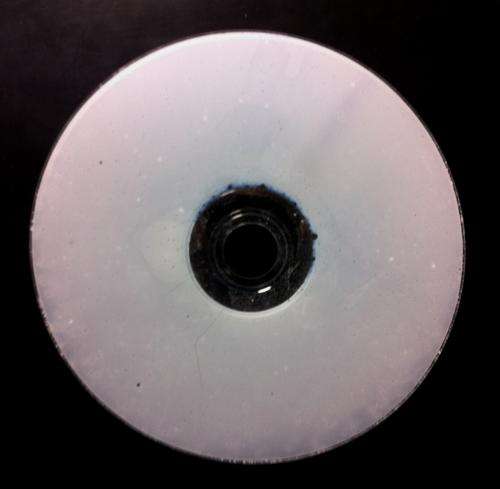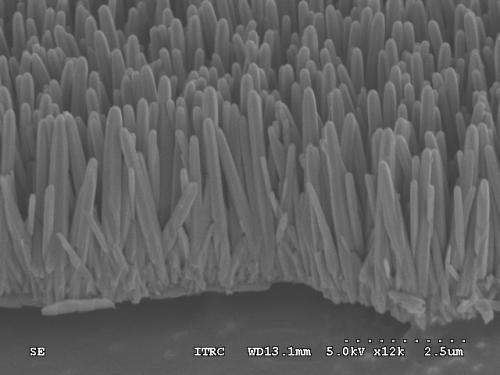Spinning CDs to clean sewage water

Audio CDs, all the rage in the '90s, seem increasingly obsolete in a world of MP3 files and iPods, leaving many music lovers with the question of what to do with their extensive compact disk collections. While you could turn your old disks into a work of avant-garde art, researchers in Taiwan have come up with a more practical application: breaking down sewage. The team will present its new wastewater treatment device at the Optical Society's (OSA) Annual Meeting, Frontiers in Optics (FiO) 2013, being held Oct. 6-10 in Orlando, Fla.
"Optical disks are cheap, readily available, and very commonly used," says Din Ping Tsai, a physicist at National Taiwan University. Close to 20 billion disks are already manufactured annually, the researchers note, so using old disks for water treatment might even be a way to cut down on waste.
Tsai and his colleagues from National Taiwan University, National Applied Research Laboratories in Taiwan, and the Research Center for Applied Sciences in Taiwan used the large surface area of optical disks as a platform to grow tiny, upright zinc oxide nanorods about a thousandth the width of a human hair. Zinc oxide is an inexpensive semiconductor that can function as a photocatalyst, breaking apart organic molecules like the pollutants in sewage when illuminated with UV light.
While other researchers have experimented with using zinc oxide to degrade organic pollutants, Tsai's team is the first to grow the photocatalyst on an optical disk.
Because the disks are durable and able to spin quickly, contaminated water that drips onto the device spreads out in a thin film that light can easily pass through, speeding up the degradation process.

The Taiwanese team's complete wastewater treatment device is approximately one cubic foot in volume. In addition to the zinc oxide-coated optical disk, the device consists of a UV light source and a system that recirculates the water to further break down the pollutants.
The research team tested the reactor with a solution of methyl orange dye, a model organic compound often used to evaluate the speed of photocatalytic reactions. After treating a half-liter solution of dye for 60 minutes, they found that over 95 percent of the contaminants had been broken down. The device can treat 150 mL of waste water per minute, the researchers say.
The spinning disk reactor is small, consumes little power, and processes contaminated water more efficiently than other photocatalytic wastewater treatment methods, Tsai says. The device could be used on a small scale to clean water contaminated with domestic sewage, urban run-off, industrial effluents, and farm waste.
Going forward, the team is also working on ways to increase the efficiency of the reactor, and Tsai estimates that the system could soon be improved to work even faster, perhaps by creating layers of stacked disks.
Presentation FW1A, "Zinc Oxide Nanorod Optical Disk Photocatalytic Reactor for Photodegradation," takes place Wednesday, Oct. 9 at 8:15 a.m. EDT at the Bonnet Creek Ballroom, Salon IV at the Hilton Bonnet Creek in Orlando, Fla.
Provided by Optical Society of America





















